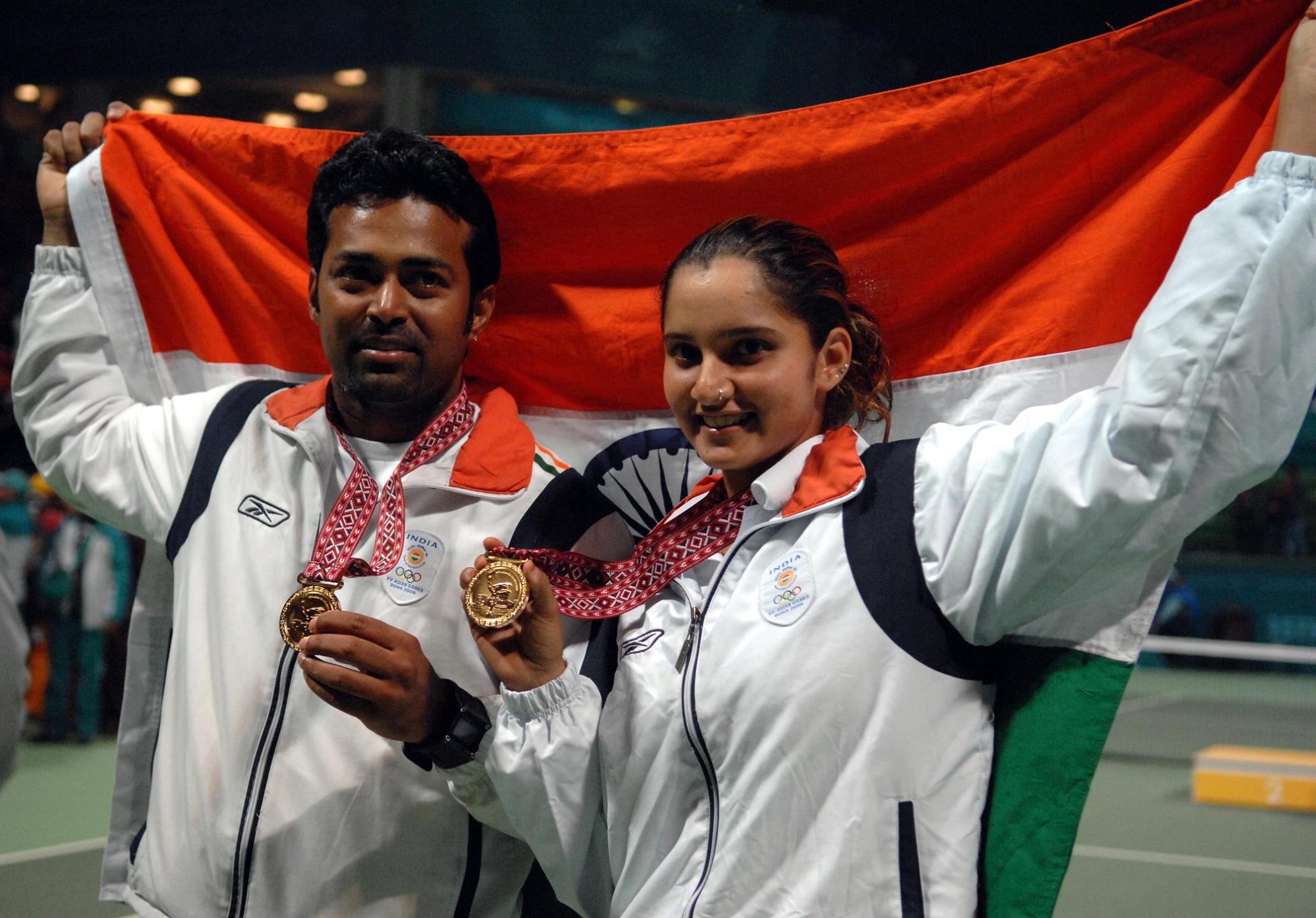Has India's success in Doubles tennis destroyed its Singles hopes?

It is 2016, and the Rio Olympics are just around the corner in August. While Switzerland can rely on Roger Federer, Martina Hingis, Stanislas Wawrinka, Timea Bacsinszky and Belinda Bencic to win medals across singles and doubles, other countries are not so fortunate – like India. India's only realistic chances exist only in doubles: the men’s and mixed competitions. However, funnily enough, while others would have rejoiced, this country
Interestingly, the first success in Indian tennis came in singles thanks to Ramanathan Krishnan who won the Wimbledon juniors in 1954. He reached the 1960 and 1961 Wimbledon semifinals on the senior level. His son Ramesh Krishnan won the Wimbledon juniors, too, in 1979. He also won the French Open juniors that year. Ramesh won eight singles titles, reaching the 1981 and 1987 US Open quarterfinals along with the 1986 Wimbledon quarterfinals.
The era also witnessed the rise of Vijay Amritraj, who reached four slam quarterfinals and won sixteen titles. His career high of No. 16 remains the highest ranking achieved by any Indian tennis player male or female in singles. The trio’s artistry of serve and volley, finesse and all-around skill wasn’t good enough to win a slam on the senior level.
In the late 1980s and early 1990s, the game started looking different with racquet technology and surface changes. The courts were becoming slower. Indian tennis professionals, proponents of variety and net play, found refuge in doubles, and this was demonstrated by the rise of Leander Paes and Mahesh Bhupathi whose partnership was affectionately named the 'Indian Express'.
Lost in the slam achievements of the former world No.1s is the fact that both had singles careers, especially Paes who peaked at No. 73 in singles and won his lone title in 1998 in Newport on grass, while also winning Bronze at the Atlanta
Flash forward to the Australian Open of 2005 where Sania Mirza, doubles world No. 1, was on the singles court against Serena Williams in the 3rd round. She had already become the third Indian woman after Nirupama Sanjeev (Australian Open 1998) and Shikha Uberoi (US Open 2004) to win a slam round. Her power, especially on the forehand, exemplified the modern aggressive baseline game.
Mirza lost to Williams in straight sets, but within weeks, she won her first singles title in Hyderabad, her hometown. She also reached the 4th round of the 2005 US Open, her best singles result in a slam. Two years later, she peaked at a career high of No. 27.
In 2012, Mirza shifted her focus to doubles to prolong her career after struggles with injuries and surgeries. But Mirza applies her singles game in doubles: she hits big from the baseline in the deuce court to utilize her forehand while hitting many swing volleys. She doesn’t have to serve-and-volley. She’s the singles player on a doubles court. (Read: Why Mirza and Hingis did NOT break the world record)
And while I write this, I remember the first time I saw Rohan Bopanna play. It was in the Hopman Cup invitational in 2007 against Mario Ancic. I kept thinking: “He has a great serve and a flashy all-around game. If only he can improve his movement and stamina.” His game was more brain than brawn, something that belied his tall frame. He has long become a doubles specialist.
It has struck me now that those two generations of Indian players that have had success; namely Paes-Bhupathi and Mirza-Bopanna, never had the physicality/conditioning required to endure a 20-year career in singles. Mirza, at her best in singles, struggled with lateral movement and chasing drop shots.
Is doubles the “easy” discipline? Far from it. Yes, in doubles, one covers half of the court, but there are reflex volleys,
Indian fans might be inclined to value doubles more because of the success of their legends in that particular discipline. Not quite. Generalizations are fallacious. Not everyone is taking up doubles as the sole discipline of choice.
Take the case of Somdev Devvarman who reached a career singles high of No. 62 in July 2011. Devvarman is an anomaly: he lacks a killer shot but is a great athlete who moves extremely well around the court. He’s not a product of the Indian system, however, as he honed his skills in the US collegiate tennis program, where they provide more attention to the game’s key aspects: technique, fitness, stamina and mental strength. Devvarman, having reached the 2nd round of all slams, is still pursuing singles—even if it means he doesn’t win the biggest prizes.
Another has been Yuki Bhambri. The 23-year-old from New Delhi was a world No. 1 junior and won the Australian Open juniors in 2009. He has been having a lot of success on the ATP Challenger Tour which is the second highest level of competition after the ATP World Tour. Last November, Bhambri reached a
However, there is some light at the end of the tunnel.
Last week was all about Ramkumar Ramanathan. The 21-year-old had an inspired run at the Aircel Chennai Open where he had wins over higher-ranked opponents in Daniel Gimeno-Traver and Alexander Kudryavtsev before losing to Aljaz Bedene in three sets. Buoyed by his hometown support, Ramanathan reached the quarters of an ATP event for the first time in his career—which could be a sign of great things to come for him and for others looking on for inspiration.
Last October, in the WTA Finals in Singapore, Mahak
“I am really happy to have won and I have really enjoyed my time in Singapore. Playing in the WTA Future Stars tournament has really boosted my determination to make it as a WTA player. The Finals is amazing and I would love to be able to come back here and play as a top-eight player,” Yadlapalli told the WTA after the win.
The answer to our question, then, lies in the tennis system we have built in the country. Just like tennis has evolved, Indian tennis has to evolve if it were to produce singles champions.
Players have to get outside of their comfort zone. More and more hours should be spent on conditioning. If your favorite surface is grass, relish the challenge of mastering the slower clay which is a surface that should be existent in abundance across India since it teaches a ton about point construction and hitting shots with different heights/spins. If the champions you look up to are doubles specialists, take pleasure in working through the 'unorthodox' route: the singles route.
More importantly, athletes who can endure the grind of the tennis tour week in, week out. Players need to make that successful transition from juniors to the pros to fully maximize their talent—and perhaps pave the way for open-mindedness as to how the sport is viewed in the country.
Equally important are the tennis academies established by Indian players. As a tennis player, you become so attuned to the changes that are taking place in the sport—maybe Sania Mirza will be able to do with her Tennis Academy what Gopichand has accomplished for Indian badminton,
The Champions Tennis League and International Premier Tennis League may bring the sport to another level in India. Seeing international stars on a yearly basis in ties that have three out of its five rubbers in singles may produce a shift. It could bring more ATP and WTA events since the demand for the sport is clearly there.
With 1.2 billion people hungry for a gold medal, after a gold-less 2012 Olympics, many will be tuning in to see how the doubles specialists will fare in Rio de Janeiro next August. The last time India won an Olympic medal in tennis was at the 1996 Atlanta Olympics. It was a bronze medal won by Paes . . . in singles.
Singles tennis will always hold the limelight in the public's gaze. With sacrifices and hard work, the Yadlapallis of India will fulfill their dreams and put India back on the International singles map. In the meantime, we should be thankful to have doubles specialists who are winning big prizes: at least, they hold their own in a nation obsessed with a single sport. We would rather have doubles champions than singles underachievers. We would rather have doubles than no tennis at all.
